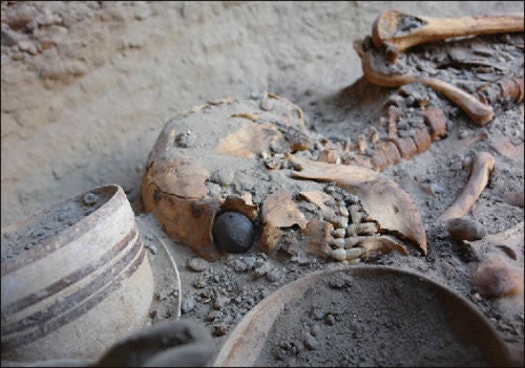A Remarkable Discovery in Iran
In December 2006, archaeologists made an astonishing discovery while excavating a Bronze Age burial site at Shahr-i-Sokhta in southeastern Iran. They found a female skeleton with a peculiar object in her eye socket, which turned out to be the world’s oldest known artificial eyeball, dating back over 4,800 years. Measuring just over an inch in diameter, the prosthetic was made from a lightweight material, likely a bitumen-based paste, and covered with a thin layer of gold. Its intricate design featured an engraved iris and golden lines radiating outward, showcasing remarkable craftsmanship.

Shahr-i-Sokhta: An Ancient Urban Center
Shahr-i-Sokhta, meaning “Burnt City,” was a significant urban center during the Bronze Age, known for its advanced urban planning and early writing systems. The site has yielded numerous artifacts demonstrating the sophistication of its society, from metalworking to pottery production. The existence of a unique writing system predating Mesopotamian cuneiform indicates a well-developed administrative structure.
Significance of the Discovery
The artificial eyeball’s discovery is crucial not only for its age but also for what it reveals about ancient medical knowledge and cultural values. The detailed craftsmanship suggests that this eye was not merely functional but also a symbol of status, possibly belonging to a noble or priestess.

UNESCO World Heritage Designation
In 2014, Shahr-i-Sokhta was designated as a UNESCO World Heritage site due to its outstanding universal value. This recognition emphasizes the site’s importance in understanding early civilizations and has attracted international attention for preservation and research efforts.
Conclusion
The world’s oldest artificial eyeball found at Shahr-i-Sokhta represents a remarkable achievement in ancient medical and artistic practices. This discovery not only enriches our understanding of a sophisticated civilization but also underscores the value of preserving archaeological heritage. As research continues, we are likely to learn even more about the lives and innovations of our ancient ancestors.

